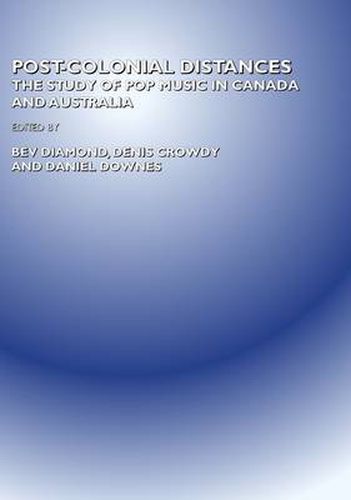Readings Newsletter
Become a Readings Member to make your shopping experience even easier.
Sign in or sign up for free!
You’re not far away from qualifying for FREE standard shipping within Australia
You’ve qualified for FREE standard shipping within Australia
The cart is loading…






This anthology emanated from a conference in St. John’s, Newfoundland, that brought together popular music scholars, folklorists and ethnomusicologists from Canada and Australia. Implicit in that conference and in this anthology is the comparability of the two countries. Their ‘post-colonial’ status (if that is indeed an appropriate modifier in either case) has some points of similarity. On the other hand, their ‘distance’ - from hegemonic centres, from colonial histories - is arguably more a matter of contrast than similarity. Canada and Australia are similar in various regards. Post-colonial in the sense that they are both former British colonies, they now each have more than a century of stature as nation states. By the beginning of the 21st century, they are each modest in size but rich in ethnocultural diversity. Nonetheless, each country has some skeletons in the closet where openness to difference, to indigenous and new immigrant groups are concerned. Both countries are similarly both experiencing rapid shifts in cultural makeup with the biggest population increases in Australia coming from China, India, and South Africa, and the biggest in Canada from Afro-Caribbean, South Asian countries, and China.The chapters in this anthology constitute an important comparative initiative. Perhaps the most obvious point of comparison is that both countries create commercial music in the shadow of the hegemonic US and British industries. As the authors demonstrate, both proximity (specifically Canada’s nearness to the US) and distance have advantages and disadvantages. As the third and fourth largest Anglophone music markets for popular music, they face similar issues relating to music management, performance markets, and production. A second relationship, as chapters in this anthology attest, is the significant movement between the two countries in a matrix of exchange and influence among musicians that has rarely been studied hitherto. Third, both countries invite comparison with regard to the popular music production of diverse social groups within their national populations. In particular, the tremendous growth of indigenous popular music has resulted in opportunities as well as challenges. Additionally, however, the strategies that different waves of immigrants have adopted to devise or localize popular music that was both competitive and meaningful to their own people as well as to a larger demographic bear comparison. The historical similarities and differences as well as the global positionality of each country in the early 21st century, then, invites comparison relating to musical practices, social organization, lyrics as they articulate social issues, career strategies, industry structures and listeners.
$9.00 standard shipping within Australia
FREE standard shipping within Australia for orders over $100.00
Express & International shipping calculated at checkout
This anthology emanated from a conference in St. John’s, Newfoundland, that brought together popular music scholars, folklorists and ethnomusicologists from Canada and Australia. Implicit in that conference and in this anthology is the comparability of the two countries. Their ‘post-colonial’ status (if that is indeed an appropriate modifier in either case) has some points of similarity. On the other hand, their ‘distance’ - from hegemonic centres, from colonial histories - is arguably more a matter of contrast than similarity. Canada and Australia are similar in various regards. Post-colonial in the sense that they are both former British colonies, they now each have more than a century of stature as nation states. By the beginning of the 21st century, they are each modest in size but rich in ethnocultural diversity. Nonetheless, each country has some skeletons in the closet where openness to difference, to indigenous and new immigrant groups are concerned. Both countries are similarly both experiencing rapid shifts in cultural makeup with the biggest population increases in Australia coming from China, India, and South Africa, and the biggest in Canada from Afro-Caribbean, South Asian countries, and China.The chapters in this anthology constitute an important comparative initiative. Perhaps the most obvious point of comparison is that both countries create commercial music in the shadow of the hegemonic US and British industries. As the authors demonstrate, both proximity (specifically Canada’s nearness to the US) and distance have advantages and disadvantages. As the third and fourth largest Anglophone music markets for popular music, they face similar issues relating to music management, performance markets, and production. A second relationship, as chapters in this anthology attest, is the significant movement between the two countries in a matrix of exchange and influence among musicians that has rarely been studied hitherto. Third, both countries invite comparison with regard to the popular music production of diverse social groups within their national populations. In particular, the tremendous growth of indigenous popular music has resulted in opportunities as well as challenges. Additionally, however, the strategies that different waves of immigrants have adopted to devise or localize popular music that was both competitive and meaningful to their own people as well as to a larger demographic bear comparison. The historical similarities and differences as well as the global positionality of each country in the early 21st century, then, invites comparison relating to musical practices, social organization, lyrics as they articulate social issues, career strategies, industry structures and listeners.